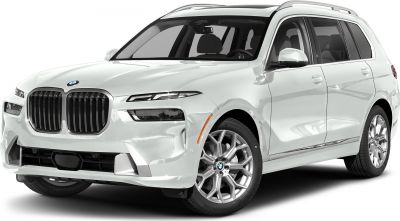 2010 Mazda CX-9 I (facelift 2010) Dimensions, Size & Specs
2010 Mazda CX-9 I (facelift 2010) Dimensions, Size & SpecsMeasurements of the 2010 Mazda CX-9 I, engineered for optimal performance and comfort
| Dimensions | |
|---|---|
| Length: | 5085 mm200.2 in16.7 ft |
| Width: | 1935 mm76.2 in6.3 ft |
| Height: | 1727 mm68.0 in5.7 ft |
| Ground Clearance: | 203 mm8.0 in0.7 ft |
| Trunk Capacity: | 487 liter17.2 cu ft |
| Trunk Capacity (Max): | 2852 liter100.7 cu ft |
| Weight Specifications | |
| Curb Weight: | 1964-2062 kg4330-4546 lbs |
| Tire Specifications | |
| Rims Sizes: |
|
| Tire Sizes: |
|
The Mazda CX-9 I facelift, produced from 2010 to 2013, is a mid-size SUV designed to cater to families and enthusiasts seeking a spacious and comfortable vehicle with a stylish presence. With an overall length of 5085 mm (200.2 inches), a width of 1935 mm (76.2 inches), and a height of 1727 mm (68.0 inches), this generation maintains a commanding road presence while offering practical dimensions for daily and long-distance driving.
Weighing between 1964 and 2062 kilograms (4331 to 4547 pounds), the CX-9 I facelift balances robust build quality with road handling dynamics. It features a ride height of 203 mm (8.0 inches), granting good ground clearance suitable for light off-road capability and improved visibility. The SUV rides on either 18-inch or 20-inch rims, paired respectively with 245/60 R18 or 245/50 R20 tires, offering a blend of comfort and sportiness.
Cargo capacity is one of the CX-9's strong points, featuring 487 liters (17.2 cubic feet) of luggage space behind the rear seats, which expands dramatically to 2852 liters (100.6 cubic feet) when the rear seats are folded down. This makes the CX-9 a versatile choice for those needing ample storage for gear, groceries, or travel luggage.
Overall, the 2010-2013 Mazda CX-9 I facelift stands out with its well-proportioned dimensions, competitive ground clearance, and flexible interior volume, positioning it as an excellent option within the mid-size SUV segment during its production period.
Discover the standout features that make the 2010 Mazda CX-9 I a leader in its class
Have a question? Please check our knowledgebase first.
The 2010 Mazda CX-9 I (facelift 2010) measures 5085 mm (200.2 inches) in length, 1935 mm (76.2 inches) in width, and stands 1727 mm (67.9 inches) tall. These dimensions make it a spacious mid-to-large SUV, offering ample cabin room and cargo space while maintaining a commanding road presence. The car's sizeable footprint accommodates three rows of seating comfortably, appealing to families and those needing a versatile vehicle.
The 2010 Mazda CX-9 I (facelift 2010) has a curb weight between 1964 kg and 2062 kg (approximately 4331 lbs to 4548 lbs). This moderate weight for its class helps balance stability and ride comfort. The heavier curb weight can slightly affect fuel efficiency and acceleration but contributes to a solid and composed feel on highways and rougher terrain. Mazda engineers tuned the chassis and suspension to maintain agile handling despite the SUV’s size and mass.
The 2010 Mazda CX-9 I offers a luggage capacity of 487 liters (17.2 cubic feet) with all seats in place, which is sufficient for daily needs and moderate cargo loads. When the rear seats are folded down, the capacity dramatically increases to 2852 liters (100.7 cubic feet), providing considerable space for large items, bulky luggage, or even moving cargo. This flexibility highlights the vehicle's utility for families and outdoor enthusiasts.
The Mazda CX-9 I facelift model from 2010 features a ground clearance of 203 mm (8 inches). This elevated ride height enhances the vehicle's capability to handle rough roads, speed bumps, and mild off-road conditions by reducing the risk of undercarriage damage. It also improves driver visibility and safety in traffic, offering a commanding driving position typical of SUVs in this segment.
The 2010 Mazda CX-9 I facelift came equipped with rim sizes of 18 inches or 20 inches, paired with tire sizes 245/60 R18 and 245/50 R20 respectively. Larger 20-inch rims typically provide a sportier look and improved cornering performance, although they might slightly reduce ride comfort due to lower-profile tires. Conversely, 18-inch rims with higher-profile tires offer a cushionier ride, better absorbing road irregularities—both setups balance aesthetics and functionality.
With its length of 5085 mm (200.2 inches) and width of 1935 mm (76.2 inches), the 2010 Mazda CX-9 I facelift is on the larger end for residential garages. Most standard single-car garages in North America and Europe typically range around 6 meters (20 feet) in length and 3 meters (10 feet) in width, so the CX-9 will generally fit. However, it may require careful parking due to its width and length, especially if the garage has storage items or narrow entryways. It's advisable to measure the garage space to confirm fit comfortably.
Compared to the pre-facelift CX-9 models produced before 2010, the facelifted 2010 Mazda CX-9 I maintained very similar exterior dimensions and weight. The length from this generation stands at 5085 mm, closely matching the previous model's size, while curb weight variations of 1964 to 2062 kg depend on trim and equipment but remain consistent with the older version. The facelift focused more on styling updates and feature enhancements rather than significant dimensional changes, maintaining the balance between spaciousness and maneuverability for drivers familiar with the prior generation.
The 2010 Mazda CX-9 I facelift's length of 5085 mm (200.2 inches) and width of 1935 mm (76.2 inches) position it competitively among midsize SUVs such as the Honda Pilot and Ford Explorer. The Pilot typically measures around 4990–5070 mm in length, slightly shorter in some trims, while the Explorer is usually comparable or marginally longer. Cargo capacity with seats up at 487 liters and a maximum of 2852 liters with seats folded is also competitive within the class, often exceeding some rivals especially in maximum cargo volume. The CX-9's slightly higher ground clearance adds to its versatility versus some competitors. Overall, it blends spaciousness with a sporty design more distinctively than certain mainstream rivals.
The 2010 Mazda CX-9 I facelift offers three-row seating, accommodating seven passengers comfortably, making it highly suitable for families needing extra passenger space compared to smaller SUVs. The generous interior dimensions, coupled with a versatile cargo area expandable from 487 liters to 2852 liters by folding rear seats, provide substantial room for passengers and their belongings. This flexibility supports various family activities, from daily commutes, road trips, to bulky gear transport, surpassing the limited space typically found in smaller SUVs. Additionally, the elevated seating position improves driver visibility and access, enhancing comfort and safety for all occupants.
The 2010 facelift of the Mazda CX-9 I primarily concentrated on refreshing the vehicle's styling and adding updated technology and equipment. Exterior changes included a redesigned front grille, updated headlights, and minor tweaks for a more modern appearance, aligning with Mazda’s evolving design language. Mechanically, the facelift maintained much of the same powertrain and chassis setup as before, focusing more on improved driving dynamics and refinement rather than a major overhaul. The available rim options (18- and 20-inch) and updated tire sizes further enhanced ride and handling balance post-facelift.
Discover similar sized cars.

| Production: | 2020-2022 |
|---|---|
| Model Year: | 2021 |
| Length: | 5151 mm202.8 in |
| Width: | 2218 mm87.3 in |
| Height: | 1797 mm70.7 in |

| Production: | 2023-present |
|---|---|
| Model Year: | 2024 |
| Length: | 5160-5170 mm203.1-203.5 in |
| Width: | 1990 mm78.3 in |
| Height: | 1780 mm70.1 in |

| Production: | 2021-present |
|---|---|
| Model Year: | 2021 |
| Length: | 5152 mm202.8 in |
| Width: | 2002 mm78.8 in |
| Height: | 1795 mm70.7 in |

| Production: | 2022-present |
|---|---|
| Model Year: | 2022 |
| Length: | 5162 mm203.2 in |
| Width: | 2000 mm78.7 in |
| Height: | 1819 mm71.6 in |

| Production: | 2018-2022 |
|---|---|
| Model Year: | 2019 |
| Length: | 5151 mm202.8 in |
| Width: | 2218 mm87.3 in |
| Height: | 1805 mm71.1 in |

| Production: | 2016-2021 |
|---|---|
| Model Year: | 2016 |
| Length: | 5095 mm200.6 in |
| Width: | 1961 mm77.2 in |
| Height: | 1742 mm68.6 in |

| Production: | 2025-present |
|---|---|
| Model Year: | 2025 |
| Length: | 5158 mm203.1 in |
| Width: | 1991 mm78.4 in |
| Height: | 1788 mm70.4 in |
